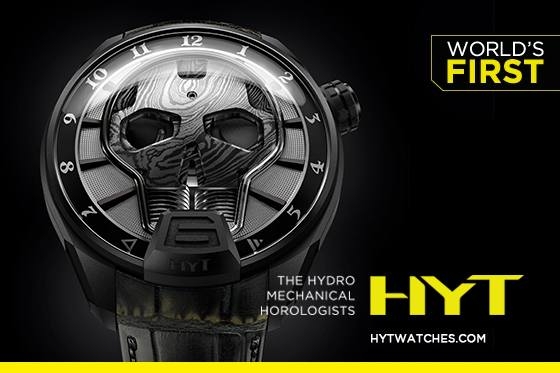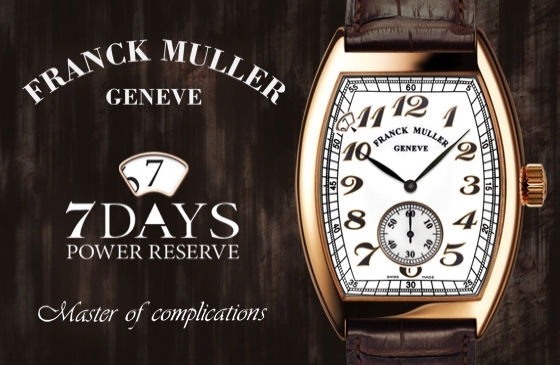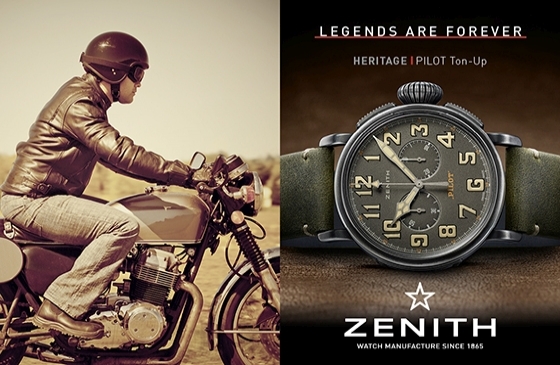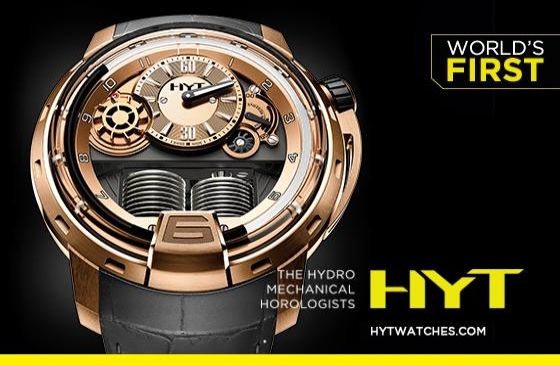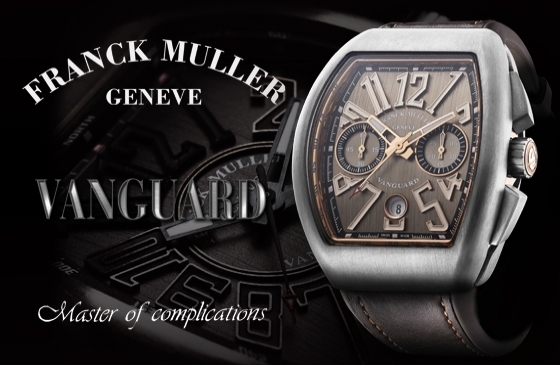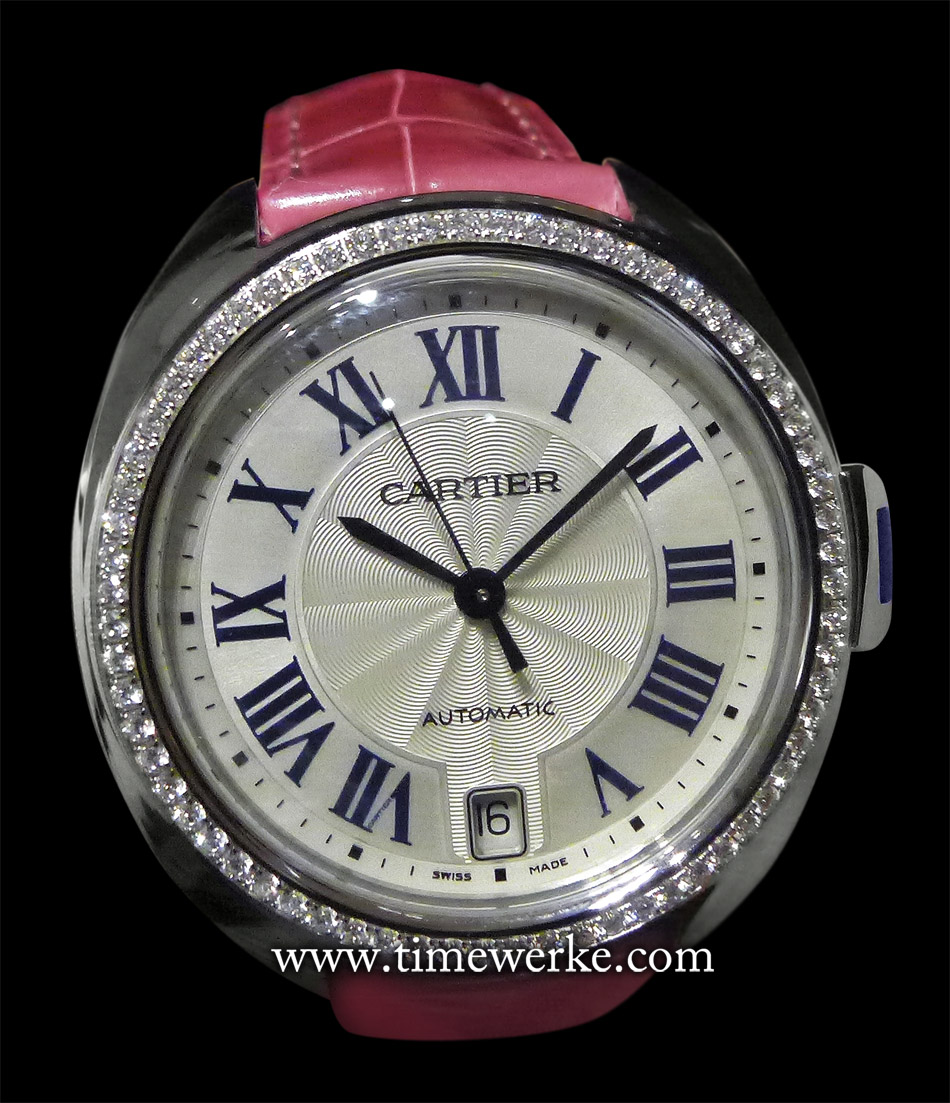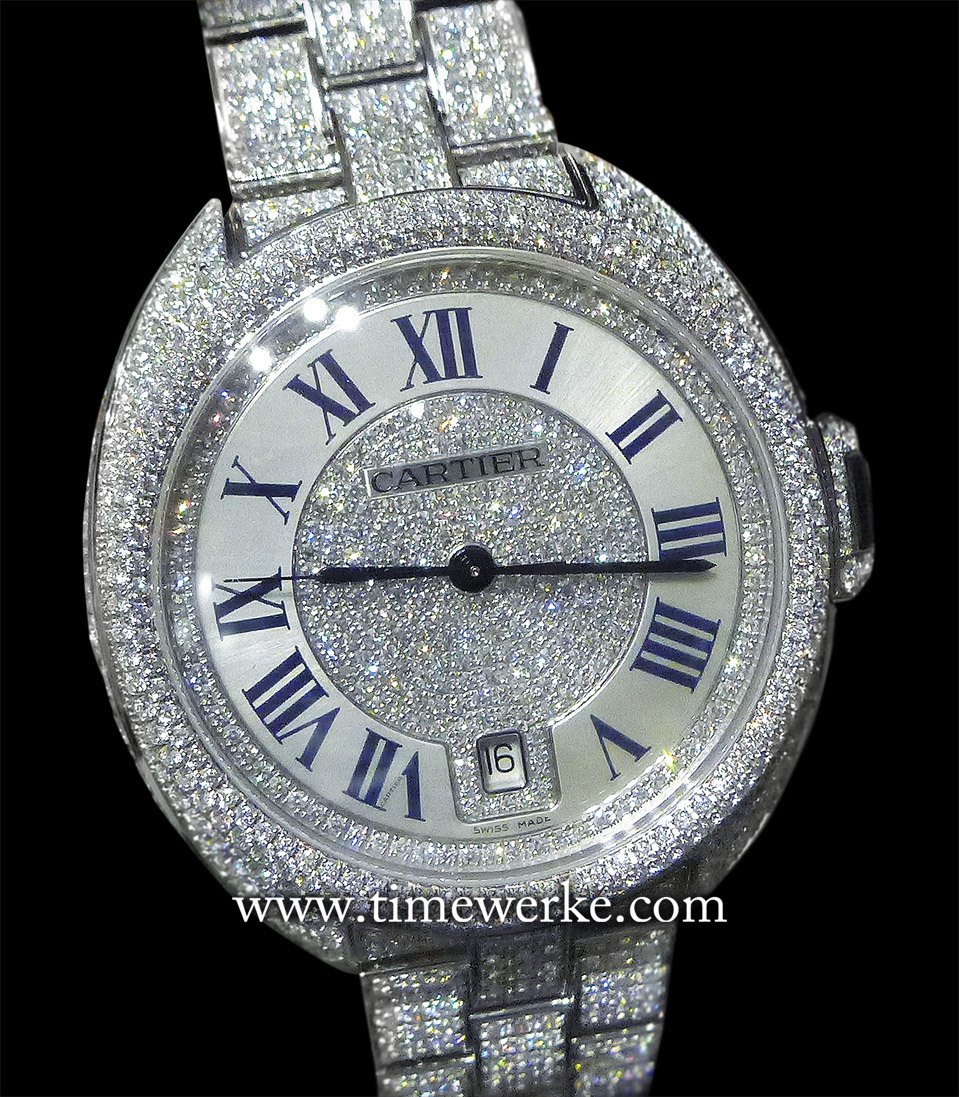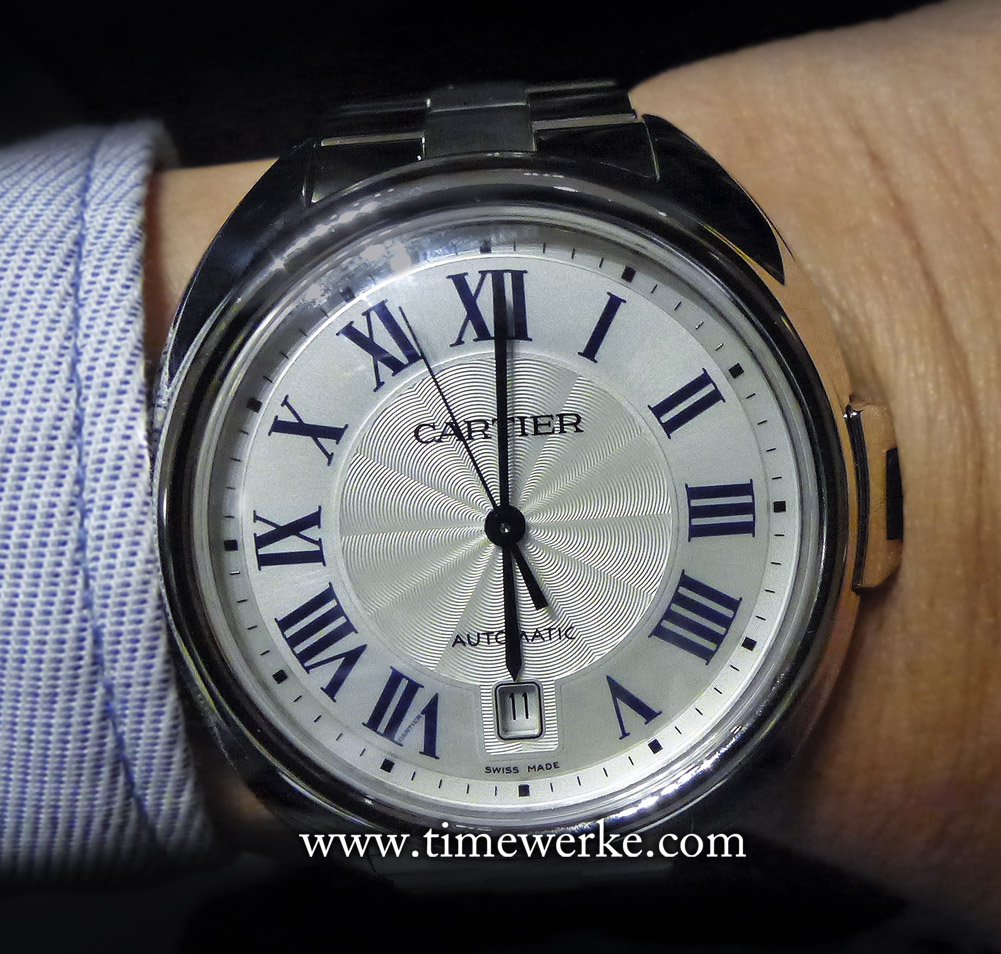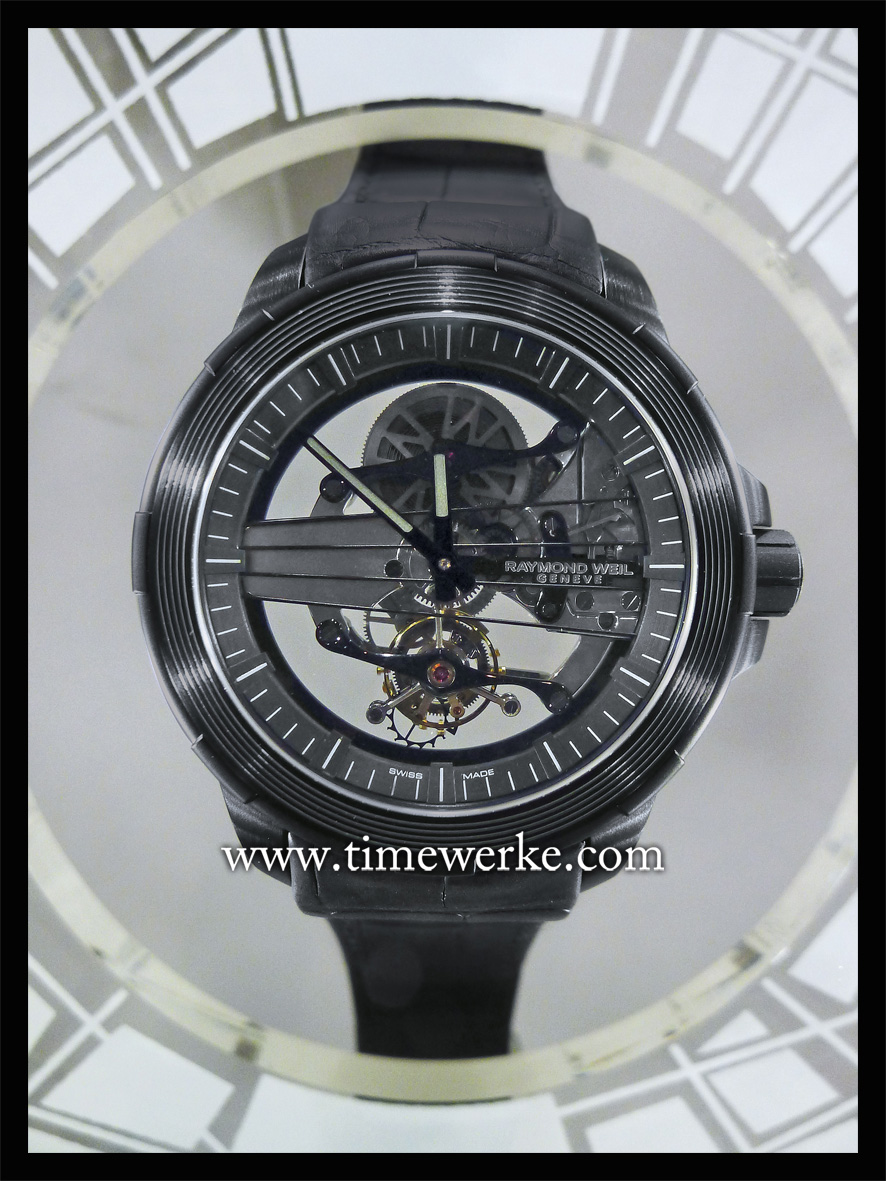
Raymond Weil nabucco Cello Tourbillon. Inspired by the cello and limited to 10 pieces. Priced at CHF39,000. It comes with a crocodylus niloticus leather strap. In other words, crocodile leather and not alligator leather. Photo: © TANG Portfolio. Elfa / Timmy. BaselWorld 2015.
Before reading on, may we suggest some music accompaniment? As you read this article, we would recommend having this soundtrack and video from youtube: The Cello Song (Bach is Back) by The Piano Guys.
For those who need to know how a cello looks like, you can view it on this video to better appreciate Raymond Weil’s nabucco Cello Tourbillon. For some lighter moments, do catch the bloopers of The Piano Guys at the end of the video.
As its name implies, the nabucco Cello Tourbillon features elements that are inspired by the cello. The movement’s bridges supporting the tourbillon escapement and mainspring barrel have the distinctive form of the cello’s f-holes, also known as the sound holes.
The cello has four strings that run across its body and neck. This would explain the four lines stretched from nine o’clock that extends outward slightly to three o’clock. Placed with the crown on the table, anyone familiar with the cello will be able to visualize the similarities between the two.
Moreover, the hands of the nabucco Cello Tourbillon are shaped like the cello bow and grooved bezel is symbolic of the five lines of the musical stave.
The nabucco Cello Tourbillon is the brainchild of Raymond Weil’s Chief Executive Officer Elie Bernheim, who was already a cellist at an early age.
The creation of this nabucco Cello Tourbillon was possible because of Raymond Weil’s research and development department that was established in 1999.
“My grandfather’s [Raymond Weil, founder of his eponymous brand] lifelong love of music combined with my own passion for the cello are the two elements that inspired us to design and develop the nabucco Cello Tourbillon, which is intended as an expression of our brand’s imaginative approach to watch design,” says Bernheim.
With this nabucco Cello Tourbillon, Raymond Weil can stake its claim of having the first watch brand to create a tourbillon that is inspired by a noble musical instrument known as the cello.
“We practically ‘tailor-made’ the parts for the nabucco Cello Tourbillon and this piece showcases our creativity and development,” says Bernheim.
Why has the brand introduced a tourbillon especially when it is not a typical product in their price segments? [Note: Raymond Weil’s products are typically priced between 800 and 3,000 Swiss francs.]
“I’m not coming in with an ‘extra’ tourbillon. This nabucco Cello Tourbillon is priced below 40,000 Swiss francs. There are not many Swiss-made tourbillons at that price.
“What we have done is to retain the ‘accessibility’ of our products. We have a strong DNA and association with music and we wanted to make things differently. This nabucco Cello Tourbillon helps our brand imagery and reinforces our position in the Swiss watchmaking industry,” Bernheim explains.
If you enjoyed the music accompaniment we recommended for this article, may we also suggest checking out a funkier cello performance? This for example: Cello Wars (Star Wars Parody) Lightsaber Duel by The Piano Guys.
For those who are familiar with British rock band The Police (formed in 1977 and since disbanded), did you know that lead singer Sting (Gordon Matthew Thomas Sumner, his stage name is Sting) can be seen playing the cello in their 1983 video for one of their spectacular hit songs, Every Breath You Take (released in 1983)? This is one of our all-time favourites.
The Police were named the “Best British Group” in the 1982 Brit Awards. Speaking of which, did you also know that 2015 marked the tenth year that Raymond Weil has sponsored the Brit Awards? Raymond Weil is the Official Watch and Timing Partner of the Brit Awards.

